We like to think some constants are with no doubt universal and shared by everyone. For instance, sounds that animals make. They don’t have change from one country to another. But here you are in Japan, learning that dogs say “wan wan” instead of “woof, woof”. Welcome to the world of Japanese animal onomatopoeia!
Other common Onomatopoeia
Animal-related Onomatopoeia
We’ve already seen how important onomatopoeia are in Japanese. With more than one thousand オノマトペ, the Japanese language cherishes particularly sounds and actions related to animal:
- 鳴き声: the voice of an animal, from 鳴く to cry)
- 擬音語: the sound (of an action, a movement…)
You would think animal onomatopoeia are similar in different languages. To tell the truth, some of them might be very close, but the contrary is more frequent! You might even doubt whether the sound really comes from the same animal! One good example would be the frog’s voice, “ribbit” in English, becoming ゲロゲロ in Japanese. The Japanese language also has a lot of words describing an animal’s behaviour, for instance, the rabbit’s movement, “boing boing”) becomes ピョンピョン. In this last case, the word refers to the little animal’s jumps here and there.

- Cat: にゃーにゃーお (Meow)

- Cats (purring): ごろごろ (purr)
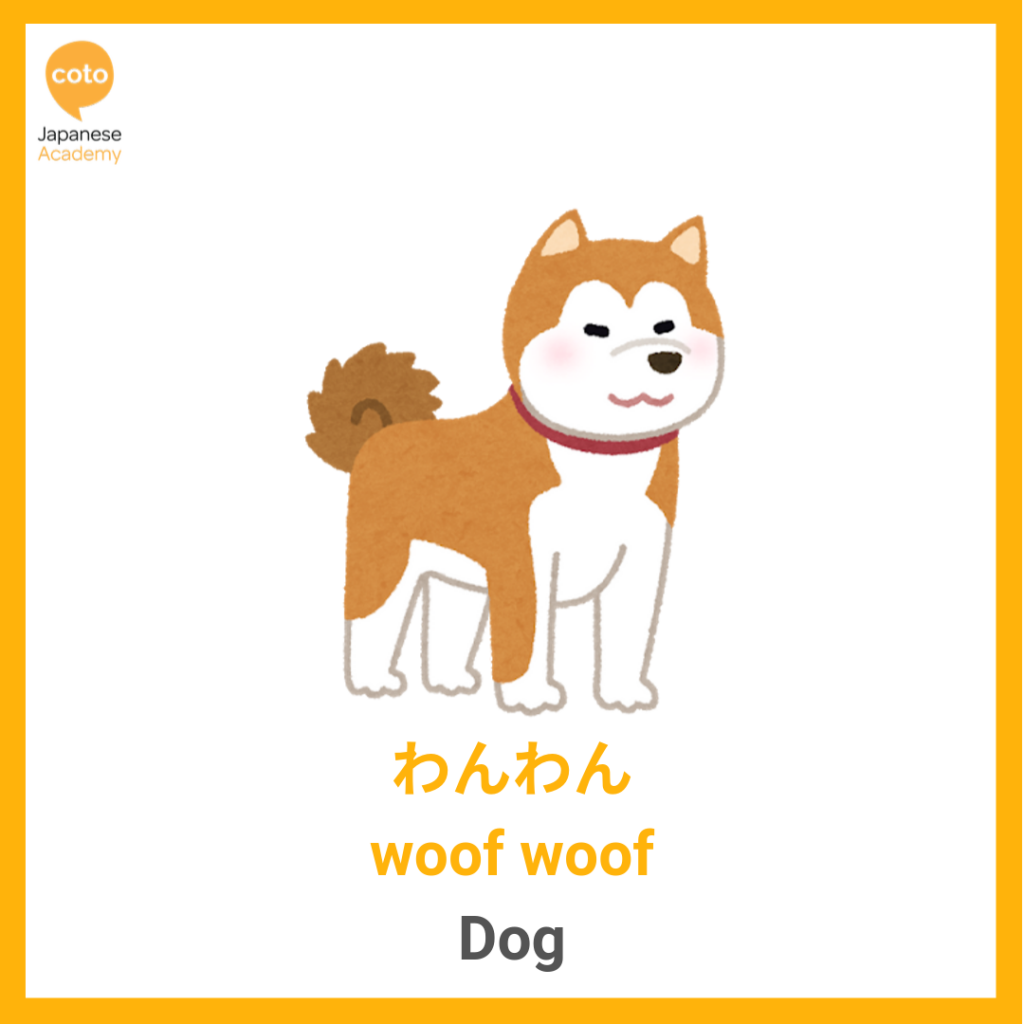
- Dog: わんわん (Woof, woof)

- Cow: もー (Moo)
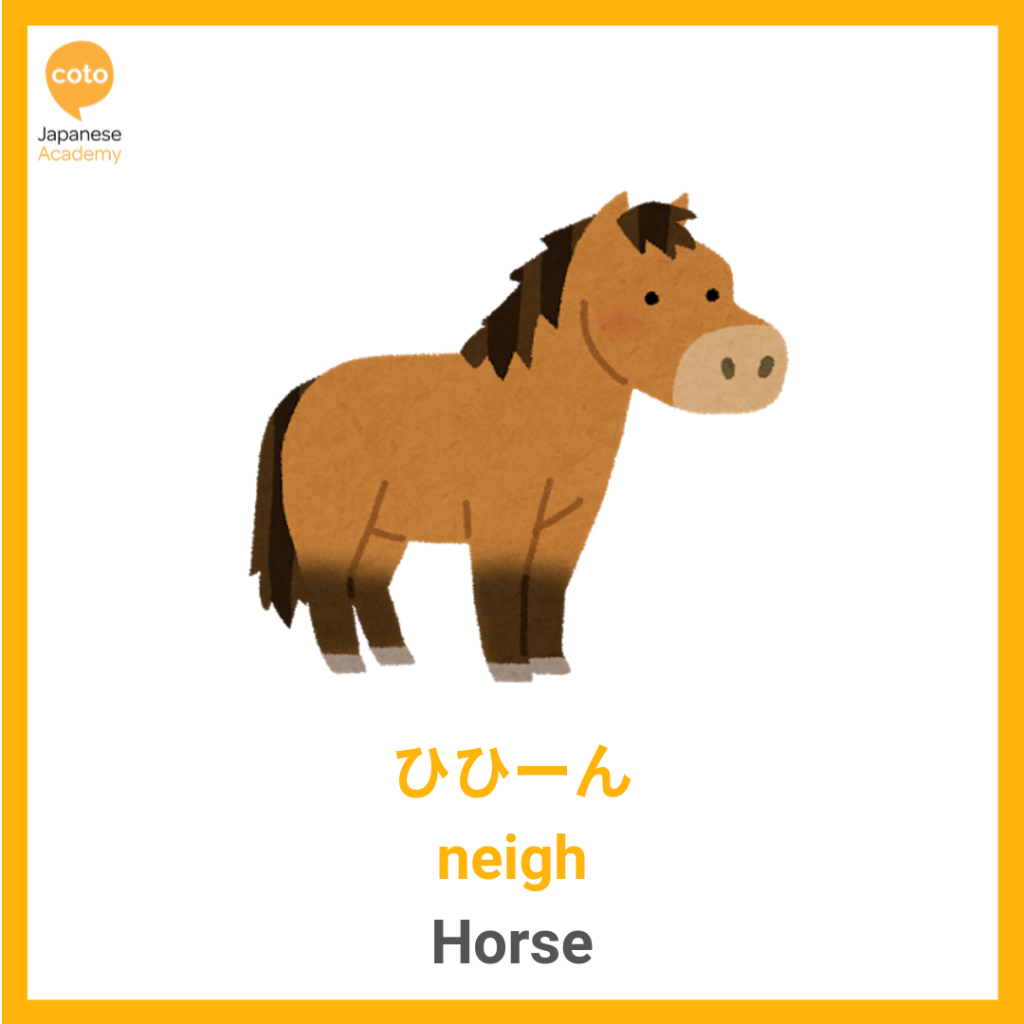
- Horse: ひひーん (Neigh)
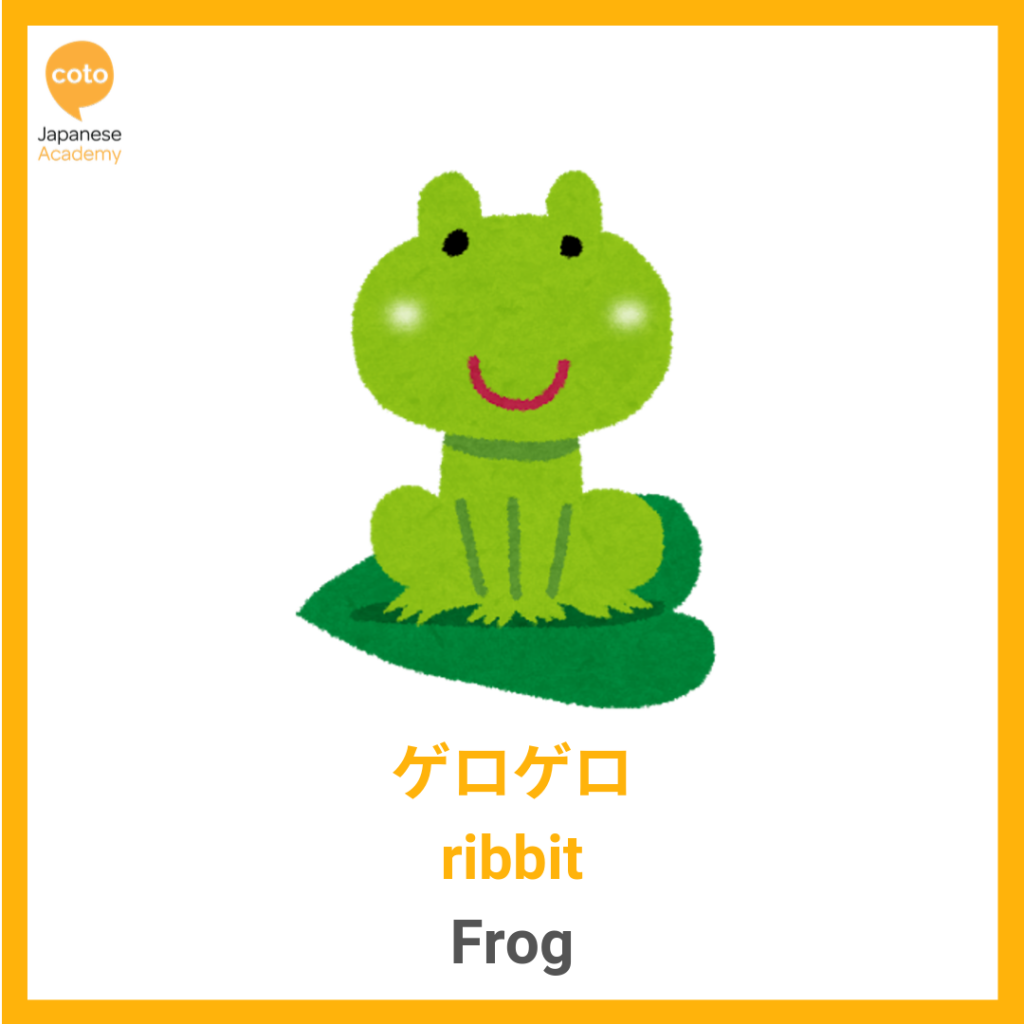
- Frog: ゲロゲロ (Ribbit)
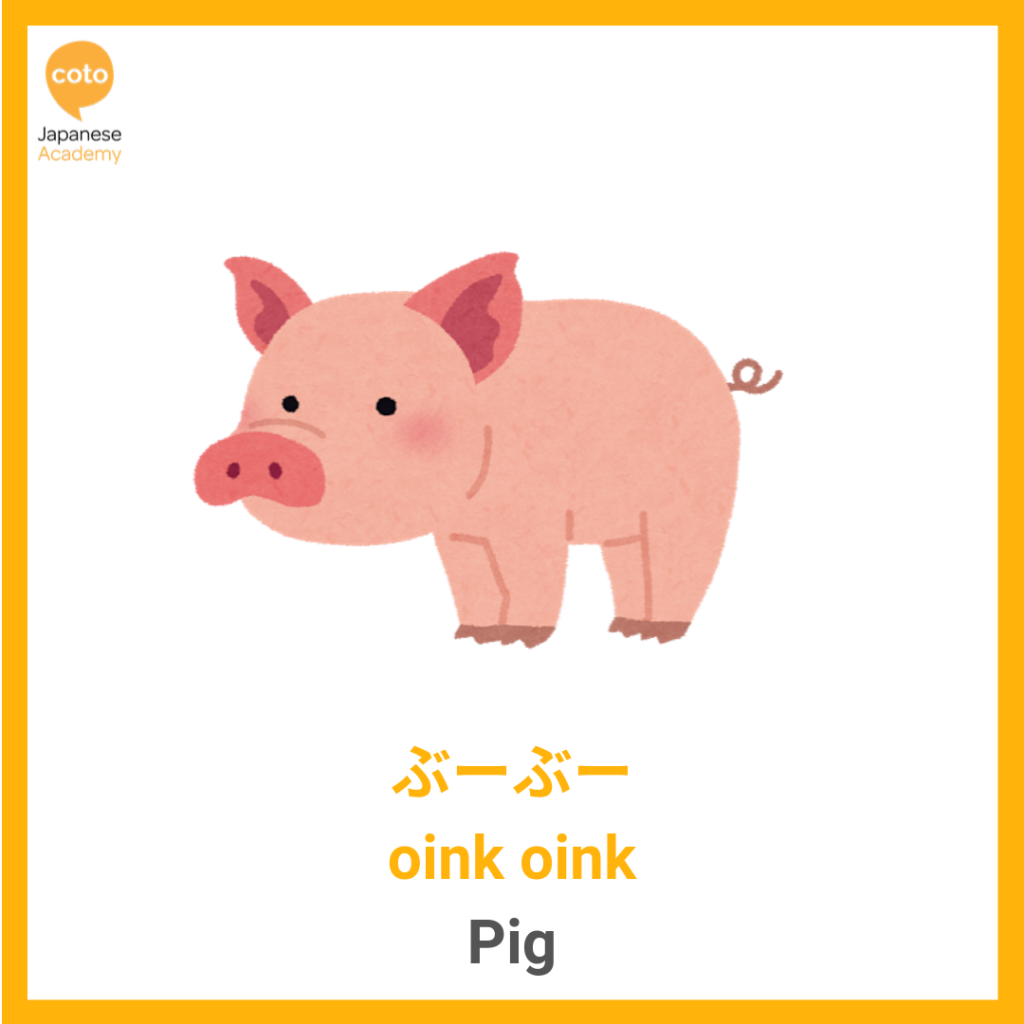
- Pig: ぶーぶー (Oink, oink)
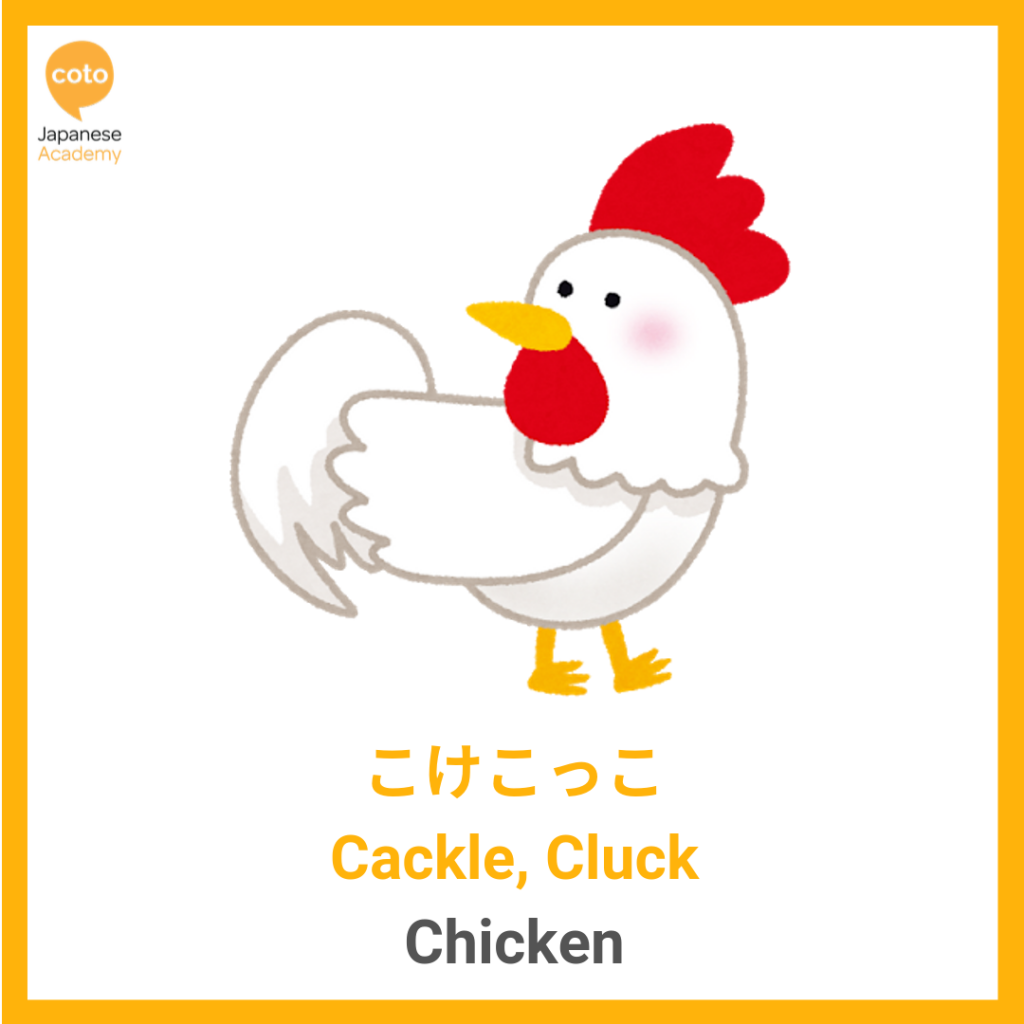
- Hen: こけこっこ (Cackle, cluck)
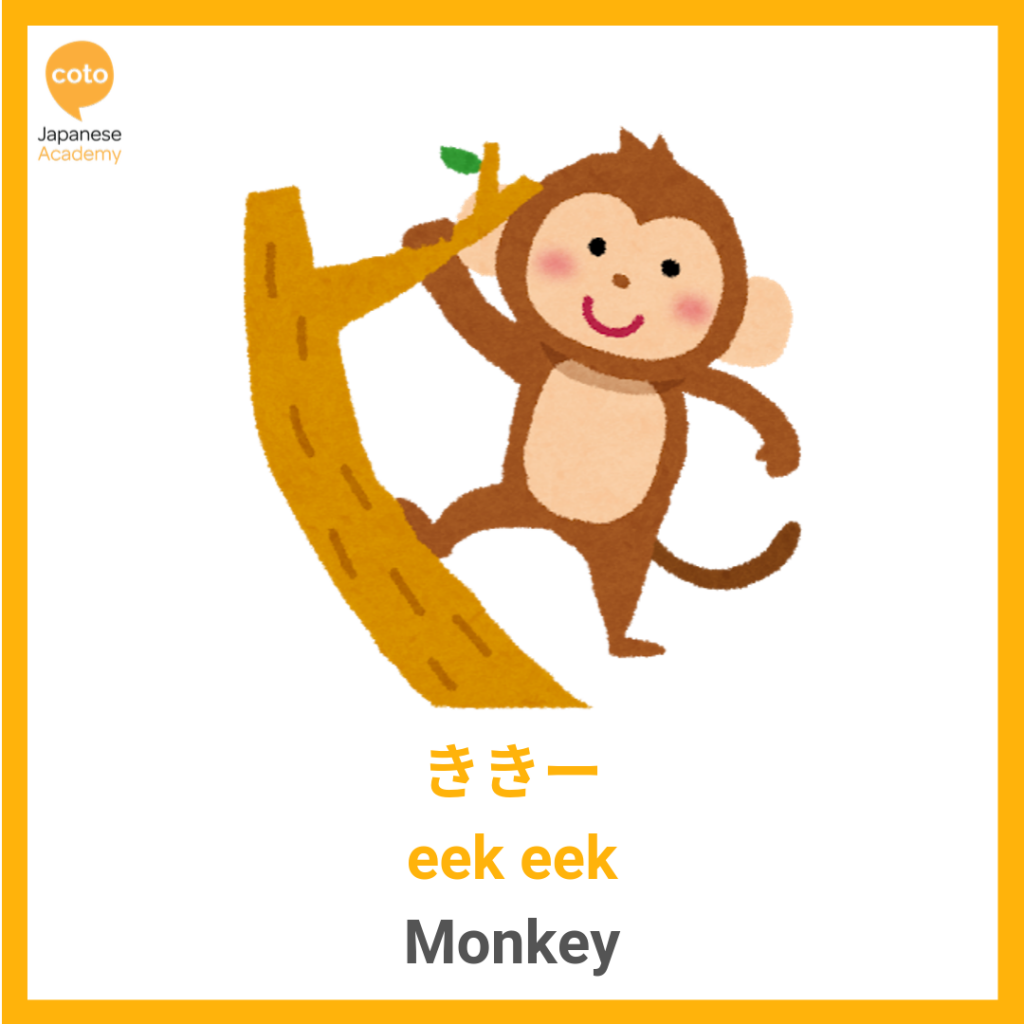
- Monkey: ききー (Eek eek)
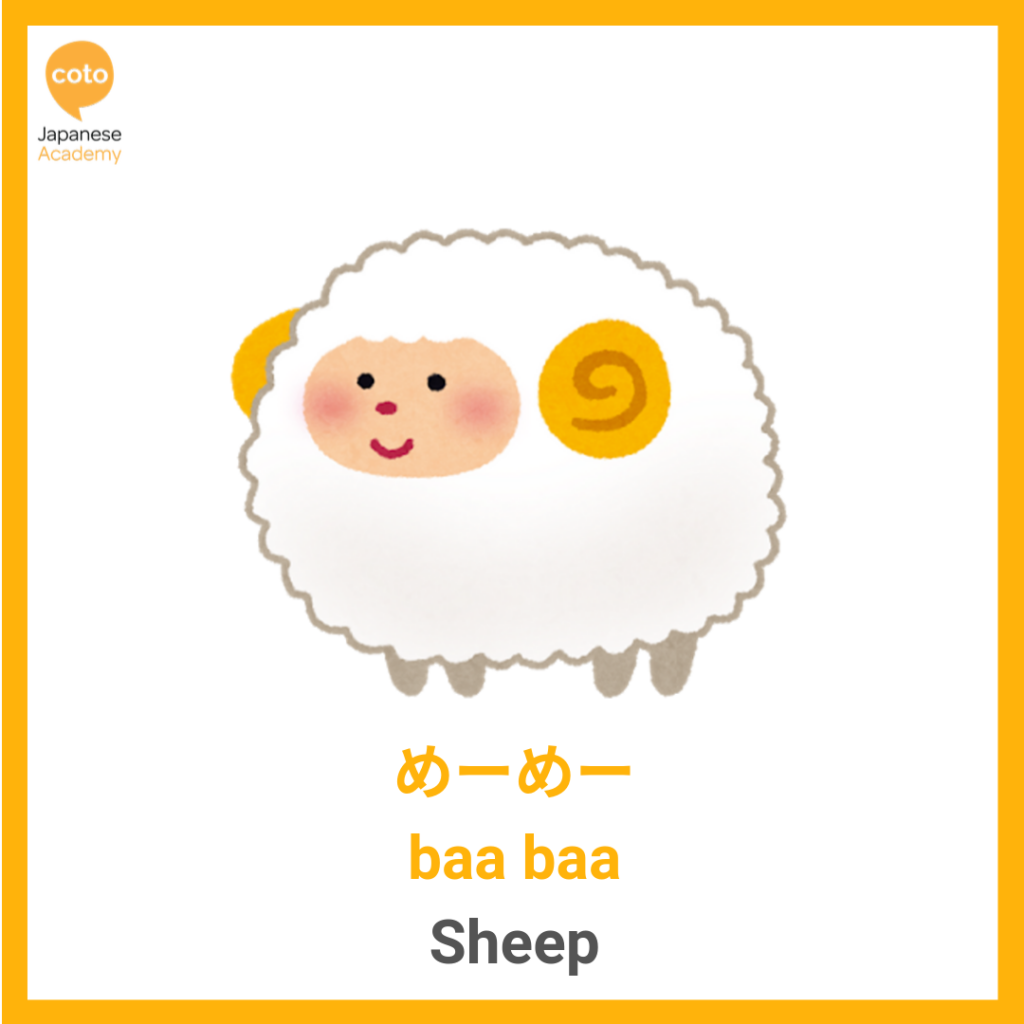
- Sheep: めーめー (Baa)
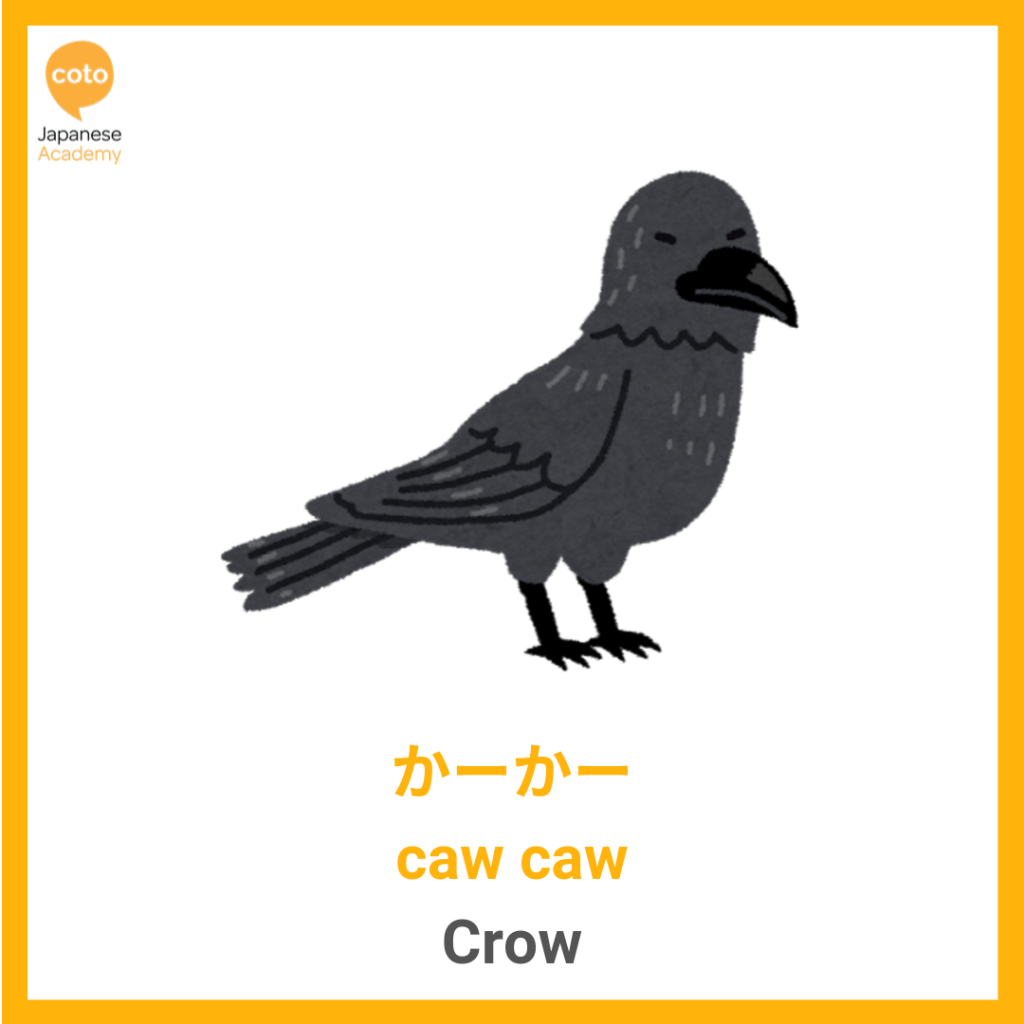
- Crow: かーかー (Caw, caw)
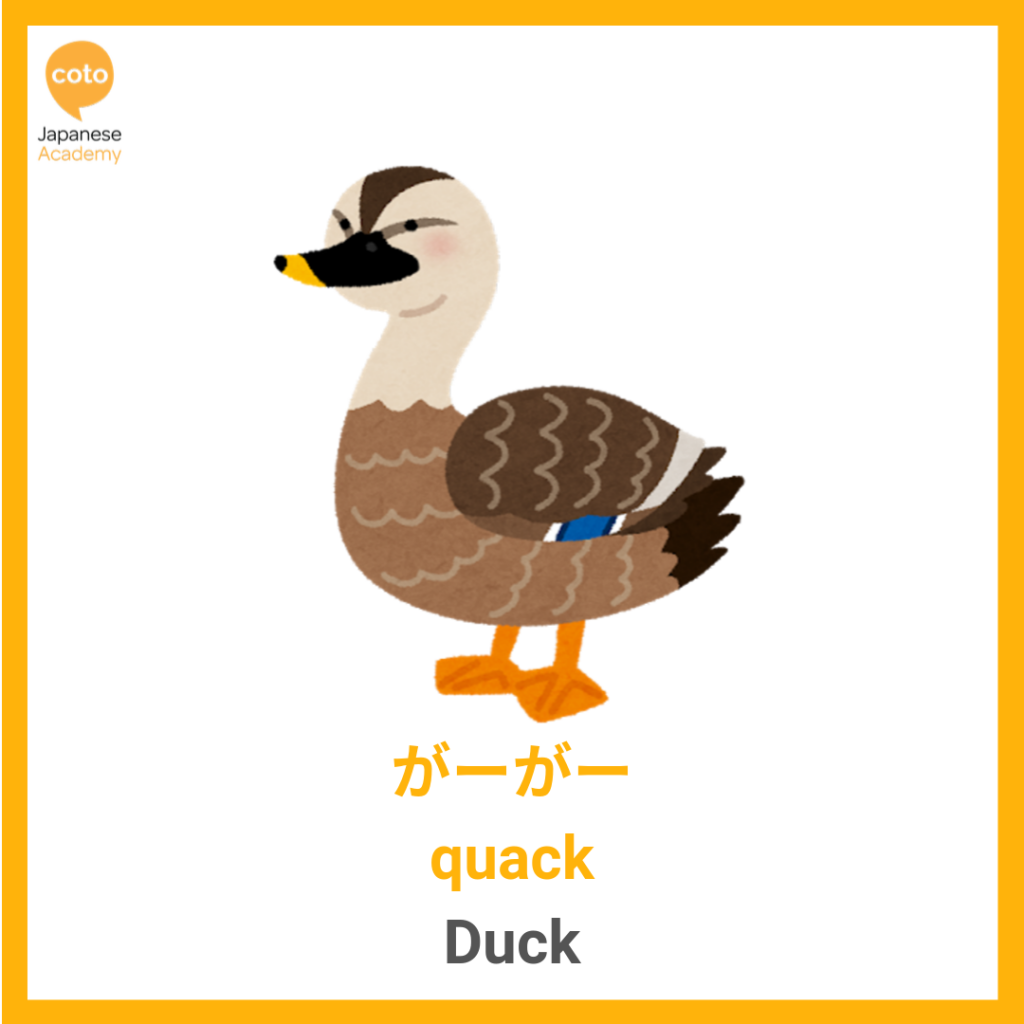
- Duck: がーがー (Quack)
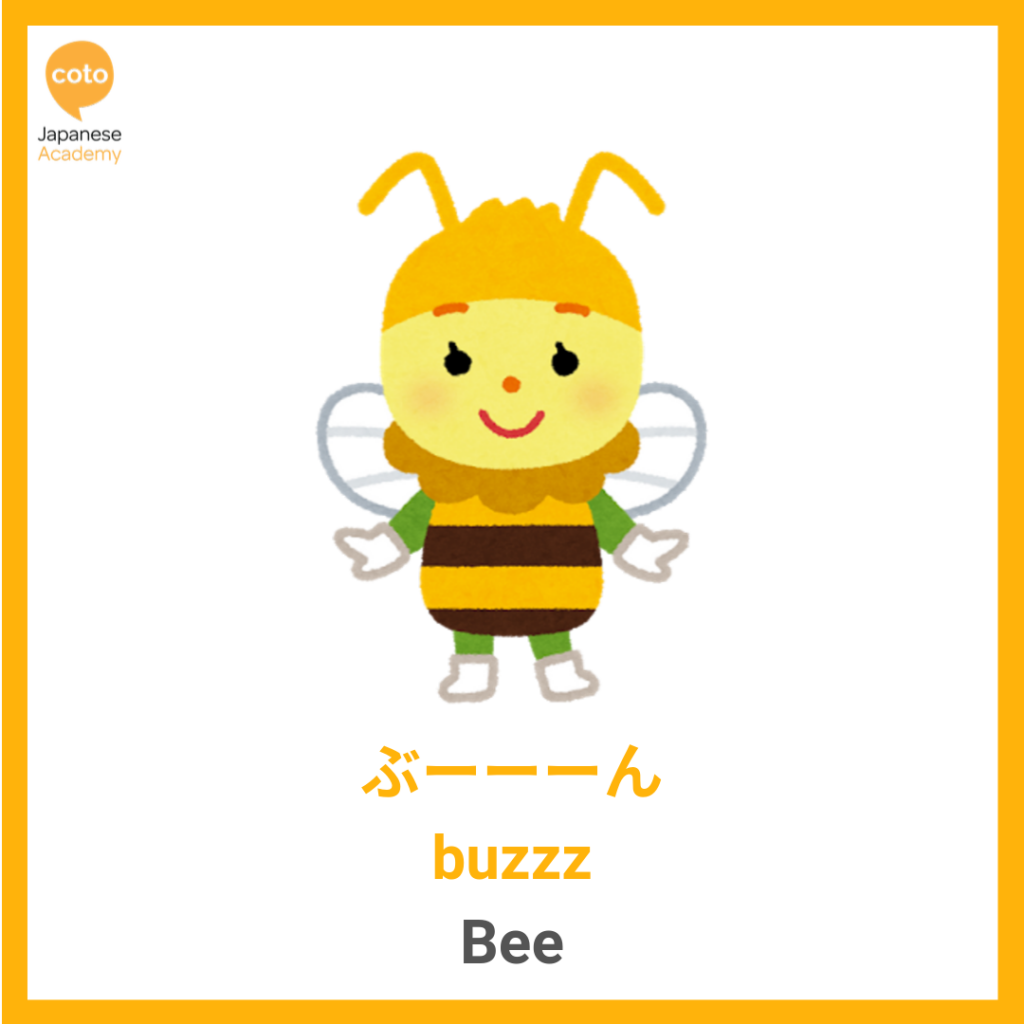
- Bee: ぶーーーん (Buzzz)
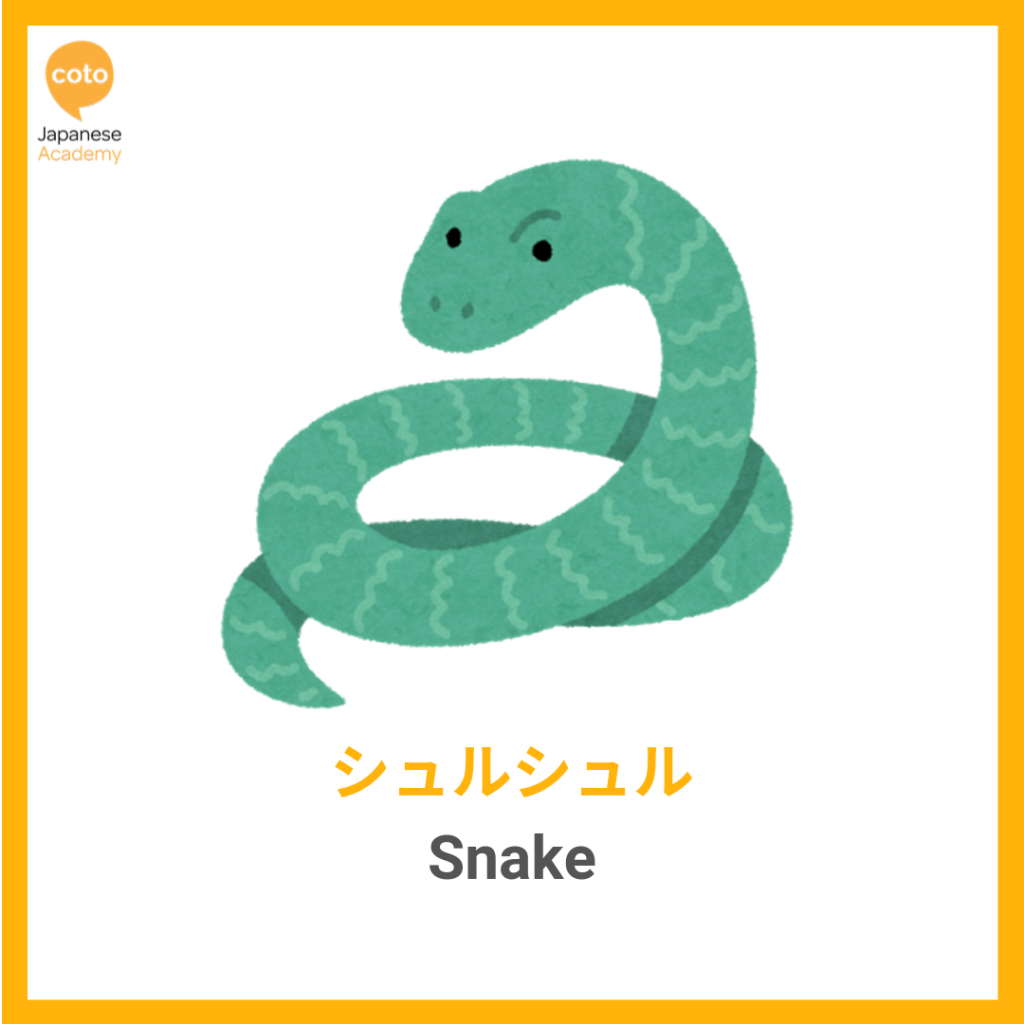
- Snake: シュルシュル
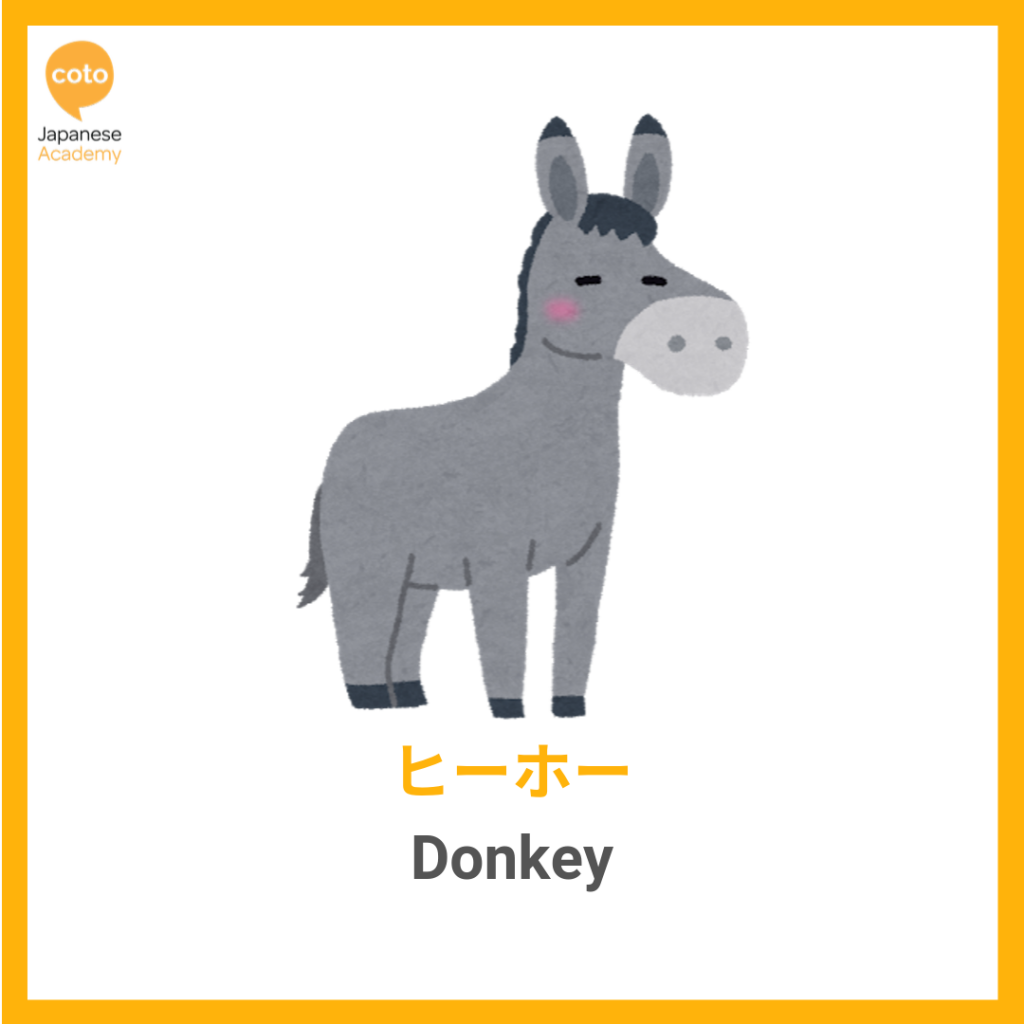
- Donkey: ヒーホー
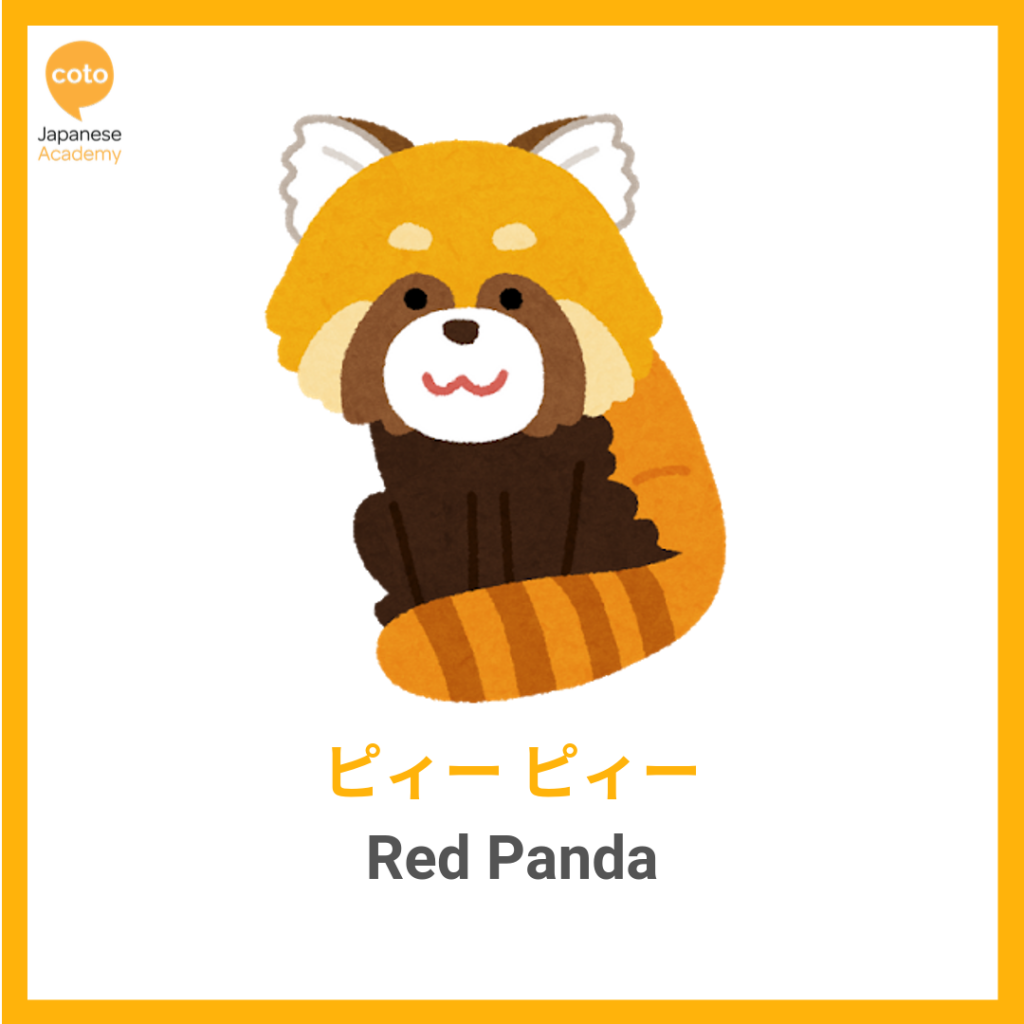
- Red Panda: ピィー ピィー
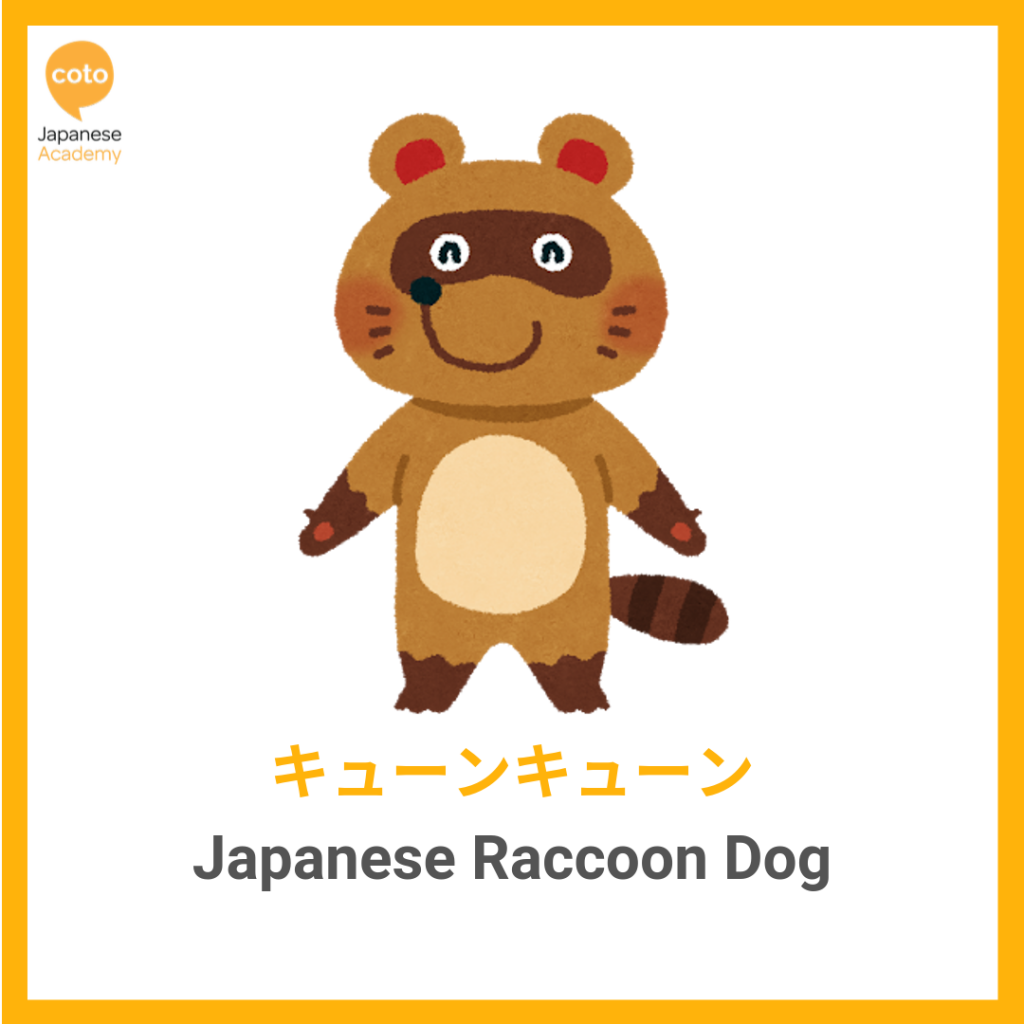
- Japanese Raccoon Dog: キューンキューン
Other common Onomatopoeia
- Even if not real, monsters also have their onomatopoeia. Like the infamous Godzilla: がおー!
- Woodpecker: かかかかか
Some animals whose voices are ignored in other languages will have a “nakigoe” in Japanese. Like the turtle.
- Turtle: む
Want to find out more about animal names in Japanese? Find out more here!
Reviewing the past examples, you might wonder how come Japanese people came out with the fox sound or the turtle’s voice… In any case, compiling all the existing’s Japanese animal onomatopoeia would be impossible, let alone the sounds made by humans, such as nagging ( かみかみ), crying (うわーん), laughing (あはは), also part of the giongo. It may take you more than a few years to truly master this aspect of the Japanese language. And one of the best and fastest way to learn onomatopoeia would be probably through reading tons of manga! Good luck!
Click to tweet this article if you find it interesting!